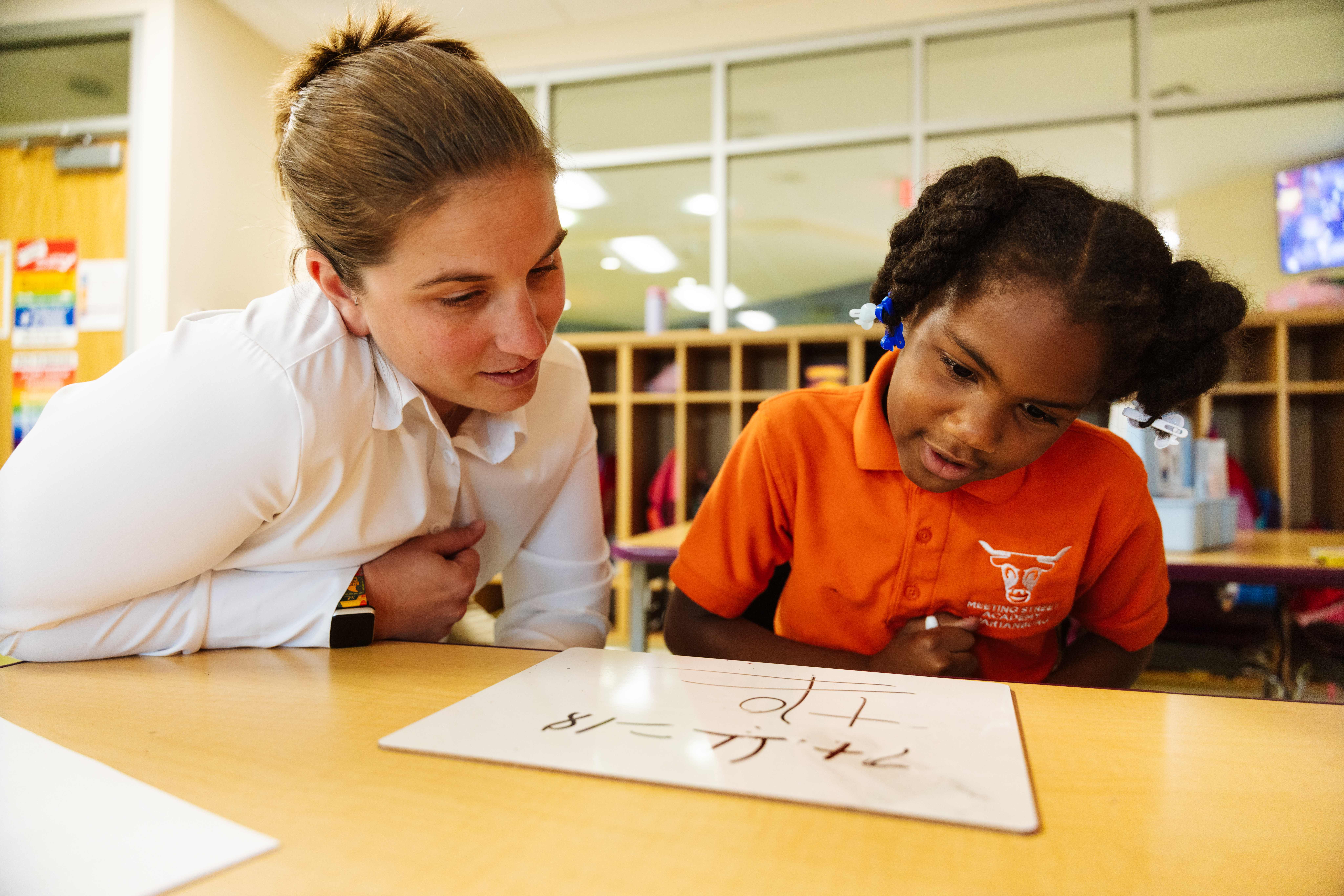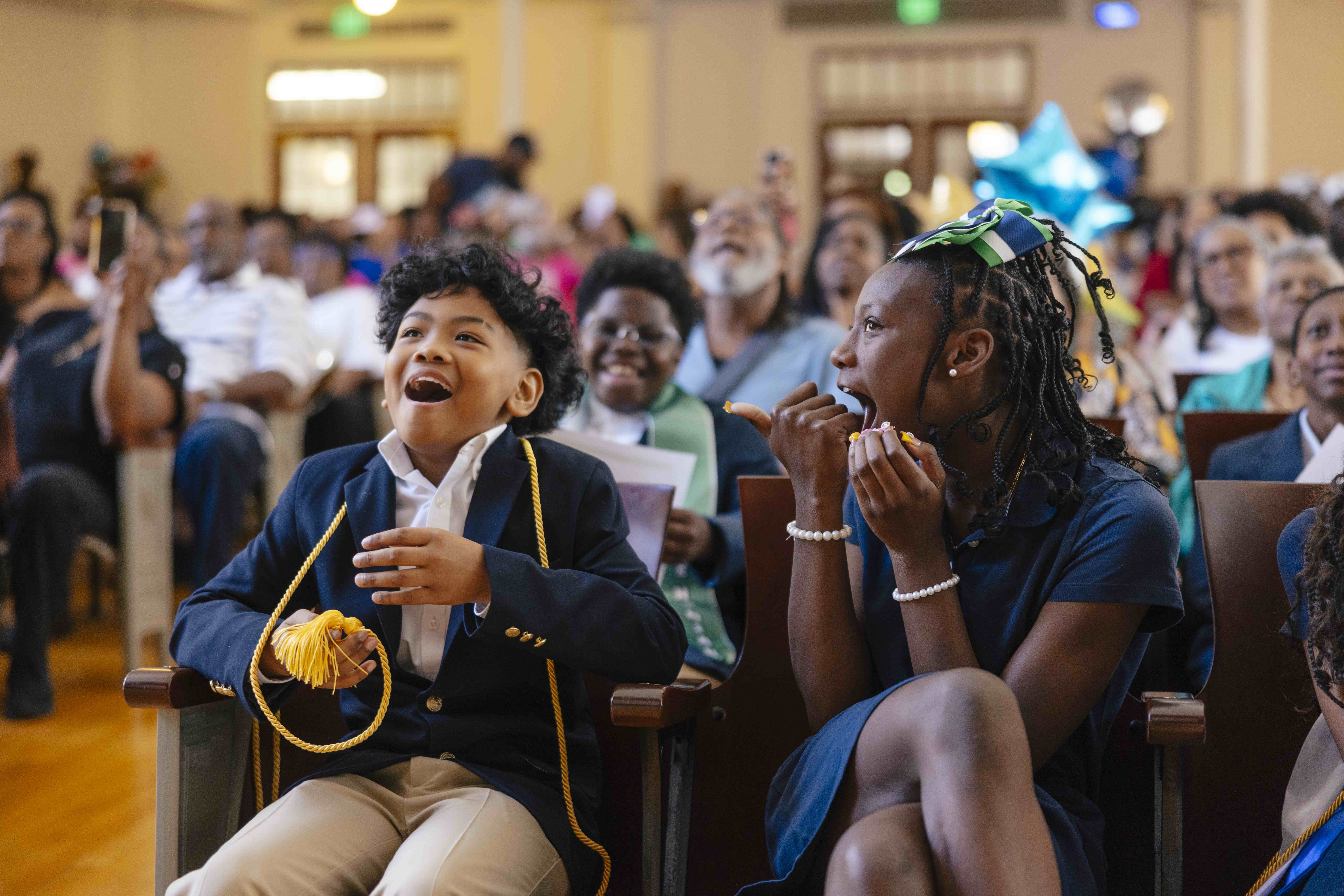Can an elementary teacher in America make really great money as a twenty-something?
Most people think the answer is “no.” I understand why. At Meeting Street Schools, however, the answer is “yes.”
That’s right. I’m a third year elementary school teacher and I just earned a six-figure salary. With all the talk about increasing teacher compensation around the country right now, I wanted to share my personal story about how an innovative, performance-based compensation worked for me this year.
Before that, however, I want to say unapologetically that upward economic mobility is important to a woman-of-color like me. I am a young professional living in a world of unique opportunities. I want the ability to serve an inspiring mission while also obtaining the financial security I’ve dreamed of since childhood. My parents didn’t have more than a ninth grade education when they were raising us, but they were determined to help us “move up”. Life in New York wasn’t easy, and the winters were very cold, but my parents worked hard to put a roof over our heads, food on the table, and some love in our home.
My childhood circumstances fueled my desire to be financially successful and independent. I went off to college with the goals of a high salary, no loan debt, a business degree, and the beginning of a good life. I graduated with a bachelors of science in Marketing from Fairfield University with hopes of entering corporate law. I never considered teaching.
When Teach For America recruited me towards the end of my senior year in college, my plans changed. Admittedly, the notoriously low salaries of teachers made me hesitant to commit, but I was immediately drawn to the mission. And the fact that I could teach at Meeting Street Schools, a place that is mission-driven and offers a path to making six figures, sealed the deal for me.
I’m also not saying compensation is everything. At Meeting Street I am supported through regular coaching, a great manager, supportive mentors, and focused professional development. I love my team members. I love our families. I love our culture. But to say that those things alone would have been enough for me to teach longer than five years wouldn’t be a true statement.
So, how does it work? Across our four school network, our performance based award system looks at student achievement growth in reading and math. If the students in a particular classroom are on a college and career trajectory, then the teacher is rewarded as such. The more dramatic the trajectory, the more significant the award. My students achieved almost two years of growth in both subjects in 2021-22. Thus, my awards were at the top end of the range.
In almost every other profession, compensation is a direct reflection of performance. Why should teaching be any different? It shouldn’t. That’s the truth that no one is willing to say. Our “Public School of Innovation” is designed to serve students who have been underserved, and the teachers that are making significant growth gains deserve to be compensated accordingly. Not just here, but at every high-need school in America. Most high-need schools’ teachers leave within five years. Without these compensation opportunities, I probably would have left the classroom sooner and been part of that statistic.
I feel valued here for the work I do and the results I achieve with my students. Being rewarded financially is something I’m proud of. Maybe I’ll still go into business, but maybe now I won’t. I’m using my earnings to invest in savings and real estate, thus still satisfying my other aspirations. This works for me, and I’m quite certain that there are many others who feel the same way, even if they’re afraid to say it. Perhaps this approach is the compensation model that other school systems should be adopting.
Anawya Quashie is a third grade math teacher at Meeting Street Academy – Spartanburg, which was recently awarded the National Blue Ribbon by the U.S. Department of Education.



